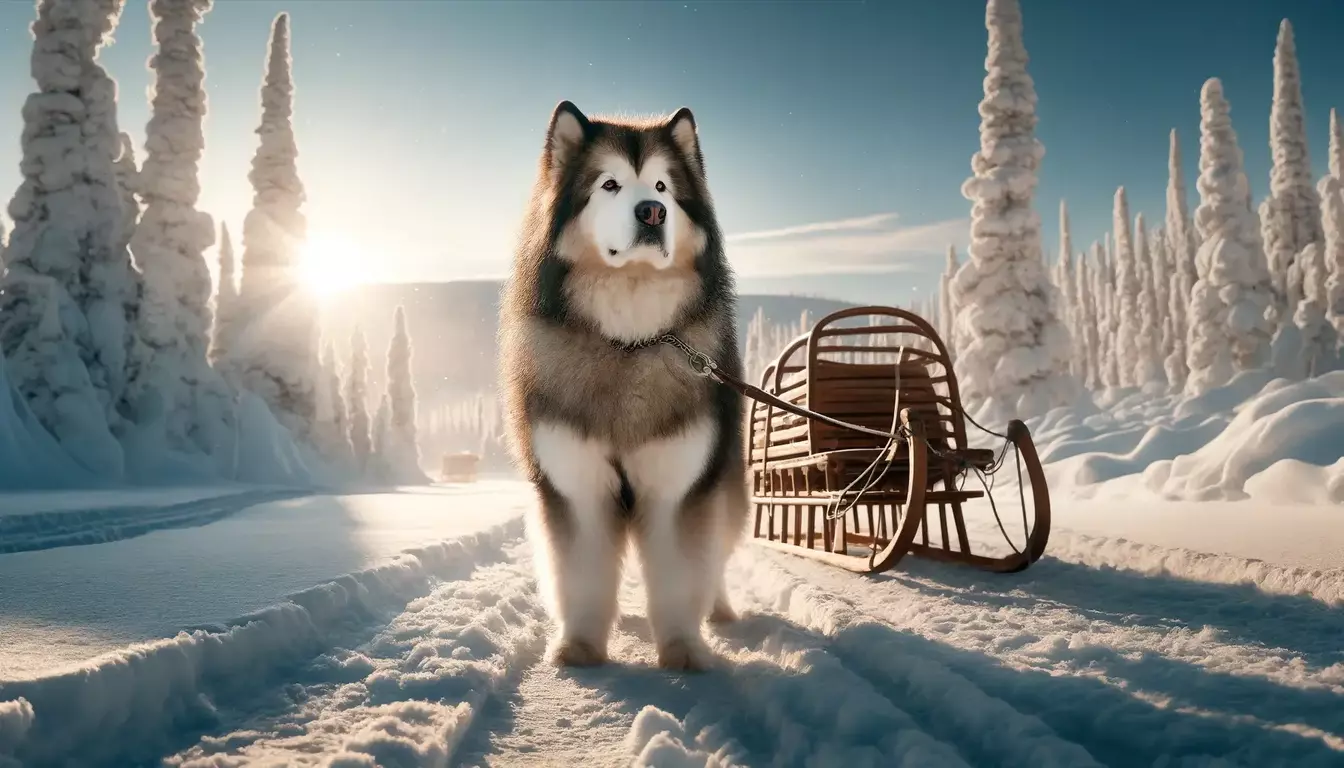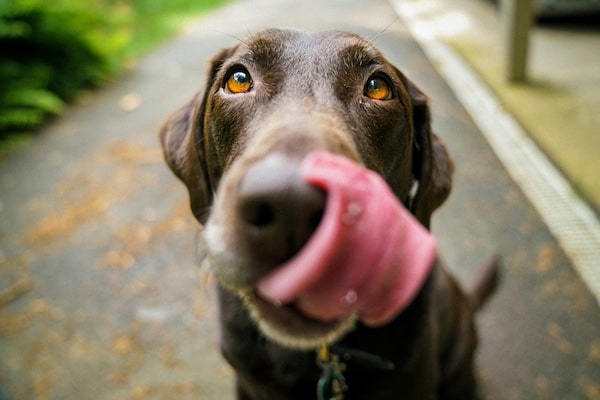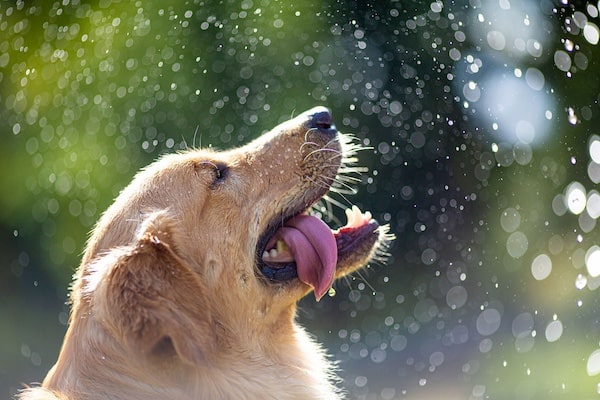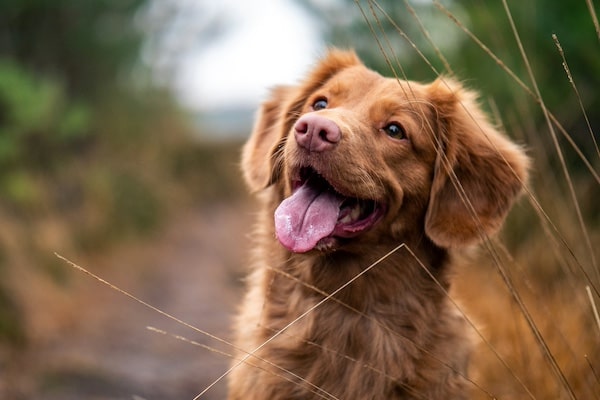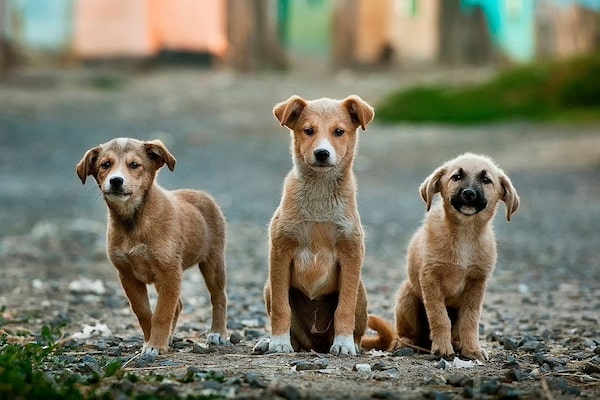Welcome to the captivating world of the Alaskan Malamute, a breed renowned for its strength, endurance, and loyalty. This guide delves into the unique traits and characteristics of these majestic dogs, providing invaluable insights for anyone considering adding a Malamute to their family.
Explore the origins of this ancient breed, understand its distinctive temperament, and learn how to cater to its needs for exercise and companionship. With practical advice on training, grooming, and health care, this guide equips potential owners with the tools to foster a thriving relationship with their Alaskan Malamute. Prepare to be enchanted by this remarkable breed as the journey unfolds.
Alaskan Malamute – Size & Life Expectancy
Height
25 inches (male)
23 inches (female)
Weight
85 pounds (male)
75 pounds (female)
Life Expectancy
10-14 years
About the Alaskan Malamute
The Alaskan Malamute, one of the oldest Arctic sled dogs, carries a storied history that dates back thousands of years. Originating from the harsh and unforgiving climate of Alaska, these dogs were first bred by the Mahlemut tribe, from whom their name derives. These indigenous people of the upper western part of Alaska relied heavily on these robust canines for survival. Malamutes were not only used to pull heavy sleds across vast frozen landscapes but also served as hunting partners, helping to locate and retrieve large prey such as seals and polar bears.
This breed was meticulously developed to maximize strength, endurance, and adaptability. The physical and temperamental traits honed over centuries made the Malamute an indispensable companion in Arctic conditions. With a thick double coat, a strong, muscular build, and an unparalleled ability to haul heavy loads, they were, and remain, a symbol of resilience and reliability.
Alaskan Malamutes in the Modern World
Transitioning from the ice-covered expanses of Alaska, the Alaskan Malamute has found a place in the hearts of many as a beloved pet. Their striking appearance and noble bearing, combined with a friendly and playful nature, contribute to their enduring popularity. Despite their challenging size and energy levels, these dogs have adapted surprisingly well to various living conditions, although they thrive best where they can have plenty of space to move around.
Today, the Alaskan Malamute stands out as a popular choice for those who appreciate a large, active dog that can participate in a variety of activities, including hiking, pulling, and competitive sports like weight-pulling and skijoring. Their need for regular, intensive exercise, along with their sociable temperament, makes them ideal companions for active individuals or families who enjoy outdoor adventures.
However, owning a Malamute requires commitment. Their intelligence and independence can pose training challenges that might overwhelm novice owners. Moreover, their thick coat demands regular grooming, and their size comes with a significant appetite. Despite these considerations, the number of dedicated breed enthusiasts continues to grow, a testament to the deep bonds that can be formed with this majestic breed.
The Alaskan Malamute Community
The global appreciation for Alaskan Malamutes has fostered a vibrant community of owners and enthusiasts. Breed clubs and organizations are dedicated to preserving the health and legacy of Malamutes through education, responsible breeding, and rescue operations. These groups provide a wealth of resources for prospective and current owners, offering advice on care, training, and the proper ethical treatment of these animals.
As the Alaskan Malamute strides confidently through the modern world, its historic essence remains intact. This breed’s journey from the snowfields of Alaska to family homes around the world is a powerful narrative of adaptability and enduring appeal. For those prepared to meet their needs, Malamutes offer unmatched companionship and the timeless dignity of a true survivor of the Arctic.
Traits & Characteristics of the Alaskan Malamute
- Strong and Robust: Built for stamina and strength, ideal for heavy pulling and endurance activities.
- Independent and Willful: Known for a strong-willed temperament, requiring consistent and firm training.
- Highly Social: Thrives on companionship with humans and does well with family interaction, but can be dominant with other dogs.
- Thick Double Coat: Provides excellent insulation, requires regular grooming to manage shedding.
- Active and Energetic: Needs regular, vigorous exercise to maintain health and happiness.
- Intelligent: Quick to learn but can be stubborn, making training both rewarding and challenging.
- Loyal and Protective: Deeply loyal to their family, often wary around strangers and protective of their home environment.
Owning an Alaskan Malamute
Considering bringing an Alaskan Malamute into your life? These magnificent dogs are more than just stunning to look at; they are filled with energy, intelligence, and affection. However, owning a Malamute is a serious commitment. This guide provides essential insights across five key areas to help you understand what it takes to care for such a powerful breed.
Health
Alaskan Malamutes generally boast robust health, but like any large breed, they are susceptible to certain conditions. Joint issues such as hip dysplasia and elbow dysplasia are common, as well as eye problems like cataracts. It’s crucial to maintain regular veterinary check-ups to monitor their health from puppyhood into their senior years. Prospective owners should ensure their Malamute comes from a reputable breeder who performs genetic testing on the parents. A balanced diet, regular exercise, and preventive care can significantly mitigate these risks, keeping your Malamute healthy and vibrant for years to come.
Exercise
Malamutes require extensive exercise to remain fit and happy. They were bred for endurance and strength, which means a quick walk around the block won’t suffice. Daily vigorous exercise like hiking, pulling, or running is ideal. Activities that can also mentally stimulate them—such as advanced obedience training, agility, or working tasks—will keep them engaged and content. Owners must be prepared to dedicate time every day to their exercise needs, regardless of weather conditions, to prevent behavioral issues caused by pent-up energy.
Grooming
The Alaskan Malamute possesses a dense double coat designed to protect it from harsh Arctic weather. This means they are heavy shedders, especially during the spring and fall when they blow their coats. Regular brushing, at least once a week, is mandatory, increasing to daily during shedding season to help manage loose fur and maintain skin health. Bathing should be done sparingly, only when absolutely necessary, to avoid stripping the coat’s natural oils. Attention should also be given to their nails, ears, and teeth to keep them in top condition.
Nutrition
Feeding an Alaskan Malamute requires careful consideration to avoid overfeeding, which can lead to obesity, especially if their exercise needs are not met. High-quality commercial dog food, rich in protein and low in fillers, can meet their dietary requirements, though some owners choose to supplement with raw or cooked meats. Foods to avoid include those high in fat and anything toxic to dogs, such as chocolate, grapes, and xylitol. Always provide fresh water, and consider consulting a vet to tailor their diet to individual needs, such as age, weight, and activity level.
Training
Training a Malamute can be challenging due to their intelligent, independent nature. They respond well to firm, consistent commands and positive reinforcement techniques. Starting obedience training early is crucial, as is puppy socialization to help them develop into well-adjusted adults. Malamutes can be dominant, so establishing clear leadership is essential. Engage them with varied training routines to keep them interested and focused. Regular training reinforces desired behaviors and helps forge a strong bond between the dog and its owner.
By understanding and addressing these aspects of their care, owners can ensure a fulfilling and joyful life with their Alaskan Malamute.
The Alaskan Malamute Standard
The Alaskan Malamute, a breed admired for its majestic appearance and rugged endurance, conforms to a detailed breed standard that reflects its historical role as a powerful sled dog capable of surviving extreme Arctic conditions. This standard serves as the blueprint for breeders and judges, ensuring that the essential characteristics of the breed are preserved and celebrated in show rings around the world.
General Appearance
The ideal Alaskan Malamute is a study in power and stamina, with a body built for strength and endurance. This breed exhibits a deep chest and a strong, well-muscled build, conveying the impression of a force capable of pulling heavy sleds over long distances. Despite its robust physique, the Malamute should move with grace and efficiency, displaying agility and power in equal measure.
Size and Proportion
The breed standard specifies that males stand 25 inches at the shoulder, while females are slightly smaller, typically around 23 inches. The Malamute’s body is compact and slightly longer than it is tall, a build that enhances its stability and power. The proportion and size contribute to the dog’s overall balance and strength, key traits for a working sled dog.
Coat and Color
The coat is a defining feature of the Alaskan Malamute. It boasts a dense double layer that protects the dog from the harsh Arctic weather. The outer coat is thick and coarse, lying flat against the body, while the undercoat is dense, oily, and woolly. Standard colors range from light gray through to black, with shades of sable and red, all with white markings. The face mask is also distinctive, typically presenting a cap over the head and additional markings on the face.
Head and Expression
A well-proportioned head with a broad skull and a powerful muzzle is essential. The eyes are almond-shaped, brown, and convey an expression of intelligence and alertness. Erect ears sit high on the head and are small in proportion to the body, contributing to the alert and energetic demeanor that the breed is known for.
Temperament
The breed standard emphasizes that the Alaskan Malamute should exhibit a friendly and affectionate nature, devoid of undue aggression. While inherently strong and dominant, the ideal Malamute is patient and loyal, qualities that make it a dependable companion in addition to a capable working dog.
Adherence to these breed standards ensures that the Alaskan Malamute not only excels in physical appearance but also maintains the temperament and abilities necessary for its traditional roles. Judges at dog shows use these criteria to evaluate Malamutes, seeking specimens that exemplify the breed’s historic and functional heritage. This meticulous attention to standard preserves the breed’s integrity and ensures its future as a celebrated member of the canine community.
Alaskan Malamute – FAQ
Welcome to our FAQ section on the Alaskan Malamute! Here, you’ll find answers to the most common questions about this powerful and majestic breed, from care tips to behavioral traits. Whether you’re a current owner or considering adding a Malamute to your family, this resource is designed to help.
Alternatives to an Alaskan Malamute
The Alaskan Malamute is often compared to a few other breeds that share its size, strength, and some behavioral traits. Among these, the Siberian Husky is perhaps the most similar. Both breeds originate from Arctic regions and were developed primarily as sled dogs. Siberian Huskies are slightly smaller and more agile, with a comparable level of energy and endurance. They also share the Malamute’s thick double coat and striking appearance, although Huskies typically have a wider variety of eye colors, including blue.
Another breed that mirrors the Malamute in terms of strength and stature is the Samoyed. Originating from Siberia, Samoyeds were used for herding reindeer and pulling sleds, much like the Malamutes. They are known for their friendly and gentle demeanor, often referred to as the “smiling sledge dog.” Their coats are also dense but tend to be whiter and fluffier than those of Malamutes.
The Canadian Eskimo Dog is another close relative, historically used for pulling sleds in Arctic environments. This breed exhibits a strong build and a high level of endurance, similar to the Malamute. Canadian Eskimo Dogs are known for their loyalty and protective instincts, making them excellent companions in challenging conditions.
Lastly, the Greenland Dog also shares many traits with the Malamute. They are robust, powerful dogs used traditionally for sledding and hunting. Like Malamutes, Greenland Dogs are capable of withstanding harsh climates and are known for their independent and hardworking nature.
All these breeds require similar care in terms of exercise, grooming, and training, reflecting their shared heritage as dogs bred for stamina, strength, and resilience in some of the world’s coldest environments.
